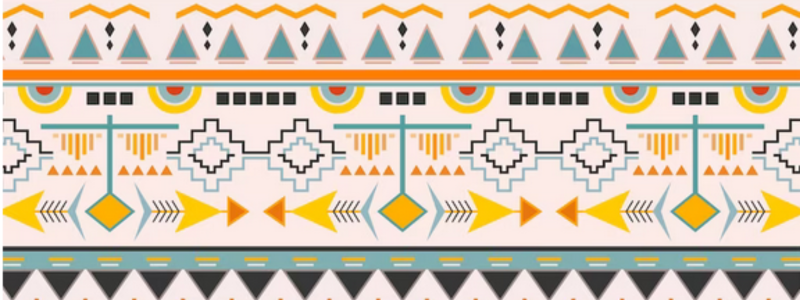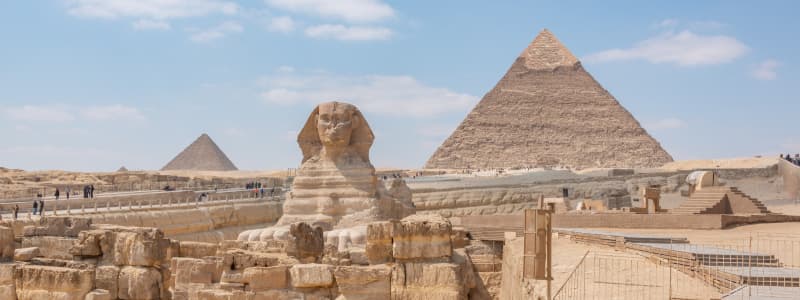Egypt has a long, colorful history of textile production, stretching back to ancient times when linen from the banks of the Nile was prized throughout the known world. In more recent times, Egypt’s textile sector has become a driving force behind the country’s industrialization, contributing significantly to the nation’s GDP, employment, and export earnings. A key advantage of Egypt’s textile industry lies in its vertically integrated supply chain, encompassing everything from cotton cultivation to garment manufacturing.
Egypt’s coveted long-staple and extra-long-staple cotton varieties are renowned worldwide, propelling the nation into the global textile limelight. As of now, the country houses a wide range of textile operations, including spinning, weaving, knitting, dyeing, printing, and garment production. Despite challenges including political unrest, economic instability, and increasing global competition, Egypt’s textile industry continues to demonstrate resilience and potential for growth.
II. Detailed Analysis of the Sourcing Process in Egypt’s Textile Industry
In layman’s terms, sourcing is akin to shopping, but at an industrial scale. However, that definition undersells its complexity. It’s not merely purchasing; it’s a strategic function involving identifying potential suppliers, evaluating their capabilities, negotiating contracts, and fostering mutually beneficial relationships.
What is Sourcing in the Textile Industry?
In the context of the textile industry, sourcing encompasses the procurement of everything from raw materials such as cotton, wool, or synthetic fibers, to textile machinery and services. It also includes components like dyes, finishes, or fasteners, and even outsourced services like dyeing or finishing. However, sourcing isn’t a one-size-fits-all function. It needs to be carefully tailored to each company’s requirements, aligning with its business strategy, production capabilities, target market, and customer expectations.
Key Elements of an Effective Sourcing Strategy
A successful sourcing strategy hinges on several key elements. These include a clear understanding of the company’s requirements and quality standards, a thorough market analysis to identify potential suppliers, a robust supplier verification and selection process, skilled negotiation to secure favorable terms, and effective supplier relationship management. Additionally, in today’s globalized and digital world, technological competency and an understanding of international trade regulations are indispensable for effective sourcing.
Sourcing Textiles in Egypt
Navigating the complex landscape of Egypt’s textile industry necessitates a granular look at sourcing in this unique environment.
Major Sources of Textiles in Egypt
Egypt’s textile sourcing is a rich tapestry, underpinned by its homegrown, world-famous cotton. The Nile Delta’s fertile soil produces high-quality long and extra-long staple cotton, treasured for its strength, softness, and superior dyeing properties. This domestically sourced cotton forms the backbone of the Egyptian textile industry, supplemented by imported synthetic fibers and other materials as required.
Identifying Potential Suppliers and Evaluating Capabilities
Identifying potential suppliers requires a combination of market research, industry networking, and vetting of suppliers for ethical and sustainability credentials. Key factors for supplier evaluation in Egypt’s textile industry include capacity, quality, cost, delivery speed, and reliability. However, it’s also essential to assess the supplier’s financial stability, adherence to ethical and environmental standards, and compatibility with the company’s technological platforms.
Challenges in Sourcing textiles in Egypt
Despite its potential, textile sourcing in Egypt is not without its hurdles. Political instability can disrupt supply chains, while economic factors like inflation or currency fluctuations can impact costs. Environmental concerns, like water scarcity affecting cotton cultivation, are also pressing issues. Companies must adopt proactive strategies to mitigate these challenges, such as diversifying their supplier base, investing in supplier development, or adopting sustainable sourcing practices.
Strategies for Effective Sourcing in Egypt
Successful sourcing in Egypt’s textile industry hinges on combining global best practices with a deep understanding of the local context. It involves building strong relationships with suppliers, investing in technology to enhance sourcing efficiency, and aligning sourcing strategies with the company’s overarching business objectives. Additionally, a focus on sustainability, ethical sourcing, and regulatory compliance can provide a competitive edge in today’s increasingly conscious consumer market.
The sourcing process in Egypt’s textile industry, with its unique opportunities and challenges, offers a rich case study for quality engineers, managers, and business owners. An in-depth understanding of this process can serve as a powerful tool in steering the company’s strategic direction, improving operational efficiency, and enhancing competitive positioning in the market.
III. Unpacking the Inspection in Egypt’s Textile Industry

Quality inspection is the linchpin that holds the sprawling entity of the textile industry together, establishing a comprehensive system of checks and balances to ensure consistent product quality. Within Egypt’s historical and bustling textile industry, QC inspection plays a crucial role. Let’s dissect this process, inspecting each layer to gain a deep understanding of its complexities and implications.
Understanding Textile QC Inspection
QC Inspection is a systematic approach to ensuring that all products or services meet predetermined quality standards. In the textile industry, it includes inspections at various stages of production, from raw material acquisition to the manufacturing of the final product. It is a critical stage to ensure product quality when sourcing textiles in Egypt.
Definition and Purpose of Quality Control Inspection
In essence, QC inspection in the textile industry involves conducting checks and tests at various production stages to ensure that the output is in line with the industry’s quality standards. The overarching goal is to ensure that the finished product meets the desired specifications and is free from defects that could adversely impact its performance or safety.
Elements of QC Inspection: Testing, Auditing, and Certification
QC Inspection is an umbrella term, encompassing a variety of activities such as testing, auditing, and certification. Testing involves checking raw materials, in-process items, and finished goods against defined parameters. It could include testing for fiber quality, colorfastness, dimensional stability, and fabric strength, among others.
Auditing involves evaluating the processes and systems used in manufacturing to ensure they are capable of delivering products of the desired quality consistently. It could include reviewing the company’s quality management system, process control methods, and employee training programs.
Certification refers to obtaining third-party confirmation that a product, process, or system meets specified standards. This could include certifications such as ISO 9001 (Quality Management Systems), ISO 14001 (Environmental Management Systems), or Oeko-Tex Standard 100 (Testing for Harmful Substances in Textiles).
Textile Inspection in Egypt
In the rich tapestry of Egypt’s textile industry, QC inspection is an integral part. The process is multifaceted, involving numerous checkpoints and challenges.
Procedures of QC Inspection in Egypt’s Textile Industry
The QC inspection in Egypt’s textile industry is a thorough process, involving multiple stages. First article inspection involves checking the raw materials, like cotton, for purity and quality. During production inspection monitors the manufacturing process at various stages, checking for consistency and adherence to standards. This can involve inspecting the quality of spinning, weaving, dyeing, and finishing processes. The pre-shipment inspection occurs once the product is completed, assessing the final output for any defects or inconsistencies.
QC Inspection Challenges in Egypt’s Textile Sector
Despite the importance of QC inspection, the process faces several challenges in Egypt’s textile industry. Technological limitations can hinder effective inspection, as outdated equipment may not detect all defects. Regulatory constraints can pose hurdles if local regulations don’t align with international standards. Additionally, ensuring a skilled workforce capable of conducting thorough inspections and interpreting the results is a persistent challenge.
Role of External QC Inspection Agencies in Egypt
External QC inspection agencies play a pivotal role in Egypt’s textile industry. These organizations bring an impartial perspective to the inspection process, ensuring adherence to both local and international standards. Their services can range from pre-shipment inspections to factory audits and product testing, providing a comprehensive QC solution.
Through the lens of a quality engineer, manager, or business owner, understanding the intricate workings of QC inspection in Egypt’s textile industry is invaluable. This understanding not only aids in ensuring product quality and regulatory compliance but also serves as a guiding beacon, helping you steer your company towards sustained success in this dynamic industry.
IV. Conclusion – Sourcing Textiles in Egypt
Bringing together all the insights gathered on the twin aspects of sourcing and QC inspection within Egypt’s textile industry, one can appreciate the vast complexities and challenges that define these areas. Nonetheless, understanding and navigating these processes are essential for any enterprise aiming to thrive in this industry.
When viewed from the lens of sourcing textiles in Egypt, it becomes evident that the selection of materials and suppliers is not a linear or static process. It requires a continuous, diligent approach to market research, evaluation, negotiation, and relationship management. Factors such as quality, cost, reliability, sustainability, and the supplier’s ethical stance must all be considered. Particularly in Egypt, where the textile industry is a significant contributor to the nation’s economy, effective sourcing is further challenged by political instability, economic volatility, and environmental concerns. However, these challenges also present opportunities for innovation, diversification, and growth.
In contrast, the QC inspection paints a picture of rigorous, systematic scrutiny to ensure that the finished product aligns with predefined quality standards. These quality checks and balances are applied at various stages, from the inspection of raw materials to the auditing of production processes and the testing of finished goods. Despite challenges such as technological limitations, regulatory constraints, and skill gaps, the QC inspection process remains paramount in maintaining product integrity and industry reputation, particularly in a globally recognized textile hub like Egypt.


